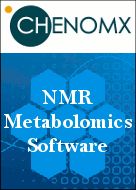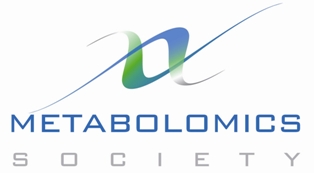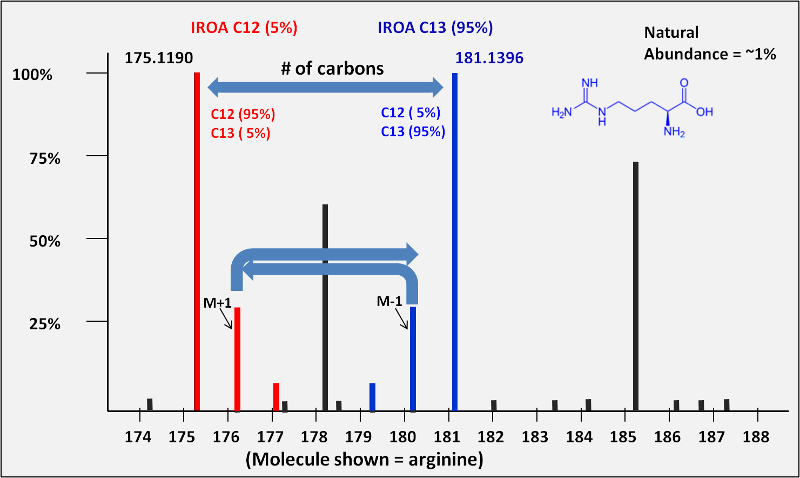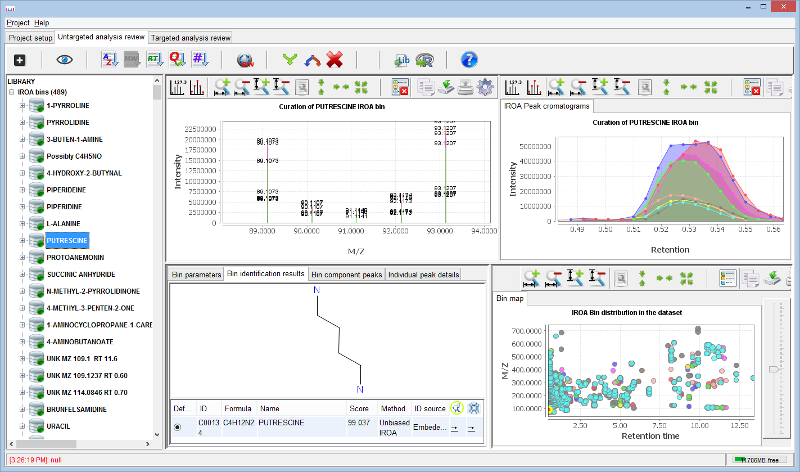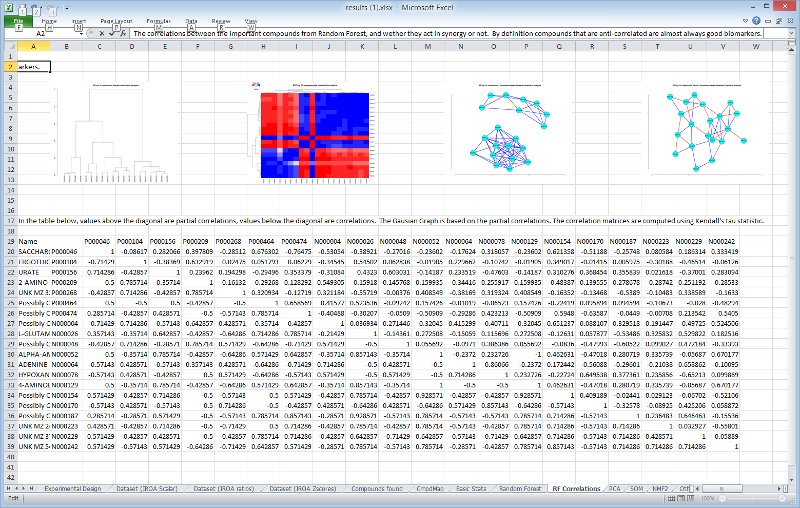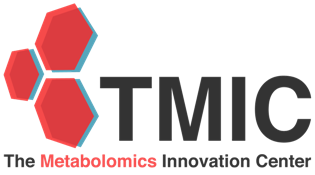3-5 Feb 2014
|
PANIC: Practical
Applications of NMR in Industry Conference
Venue: Hilton
Charlotte University Place, Charlotte,
North Carolina, USA
Mission Statement
Practical Applications of NMR in
Industry Conference (PANIC) was initiated
to provide an interactive forum for
discussion of the latest developments in
the use of NMR for practical applications
to real problems faced by scientists in
industry and research institutions. The
emphasis is the practicality of the
solution and “getting the job done”. The
forum will provide a venue for
presentation of practical applications,
and workshops for discussion of real-world
experiences relevant to current product
development needs with an opportunity to
share case studies to drive further
development of NMR technology.
Solution-state, solid-state, time-domain,
and zero-field applications are all
equally welcome at PANIC. The forum also
will provide a venue for industrial,
regulatory, government, and academic
scientists to meet, network, and
participate in exchanges of knowledge for
mutual education in and advancement of the
use of NMR techniques.
About This Conference
The PANIC meeting is intended to
address topics that occur daily in
industrial, government, and academic
research laboratories whose primary task
entails the application of NMR to a
diverse set of analytical problems. Topics
will include quantitation, molecular
structure characterization, trace
component and mixture analysis, and
product support for a variety of materials
that include small molecules, polymers,
heterogeneous mixtures, natural products,
biosimilars, polysaccharides, and
proteins. The conference will provide
in-depth discussions of the “nuts and
bolts” of basic NMR experiments that
accent the underlying best-practices
developed to address these everyday
problems. It also will explore the
regulatory aspects of the applications of
these experiments.
Greater insights will be provided into the
less frequently explored techniques used
in NMR such as quantitation, chemometrics,
automation, relaxometry, and at/on line
instrumentation. Attendees will have the
opportunity to learn about and discuss
applications of NMR to polymers,
petroleum, food, agriculture, and
nutritional supplements that are rarely
discussed at other NMR meetings. Ample
opportunity will be given to Network with
people who are experts in inventing NMR
experiments to solve real world problems
in a timely and efficient manner that is
demanded by working in the venue of
product delivery.
For more
information, visit http://www.panicnmr.com/
|
3-7 Feb 2014
|
The Imperial International
Phenome Training Centre is offering "Hands-on
LC-MS for Metabolic Profiling"
Venue: The Imperial
International Phenome Training Centre,
Imperial College, London, UK
This week long course aims to cover how to
perform a metabolic profiling experiment,
from start to finish. It will cover study
design, sample preparation, the use of
mass spectrometry for global profiling and
targeted methodologies and data analysis.
Day 1
Introductory lectures in mass spectrometry
and chromatography, study design and
sample preparation.
Days 2 & 3
Analysis of biofluids through global
profiling and targeted analyses; one day
spent on each of the newest QToF
instrumentation and the newest TQ
instrumentation. Instrument set up, method
development and acquisition will be
covered. As we have set a maximum of 4
attendees per instrument this allows for
hands-on participation by all.
Day 4
Lectures in data analysis, followed by
workshops where attendees will process the
data acquired from the previous day,
allowing for development of interpretation
skills.
Day 5
Application lectures, tips, tricks and
troubleshooting.
Download the full programme here: LCMS
Metabolic Profiling Feb 2014
For more
information, visit http://www1.imperial.ac.uk/iiptc/courseinfo/lcms/.
|
2 March 2014
|
Introduction to
Metabolomics course at the upcoming Pittcon
conference
Venue: Chicago, USA
This course will provide an introduction
to various global and targeted
metabolomics approaches using liquid
chromatography – mass spectrometry
(LC-MS). The course will briefly cover
practical and fundamental aspects of
sample preparation, LC-MS analysis,
experimental design, quality control, data
processing, statistical interpretation
including multivariate statistical
analysis and metabolite identification
strategies in the context of global
metabolomics. Examples from various fields
including biomedical, clinical, life
sciences will be highlighted throughout
the course. Strategies to enhance
metabolite coverage and data quality for a
given application will be discussed in
detail. Practical examples and critical
discussion will be incorporated throughout
the course to deepen the participants’
understanding of the field of metabolomics
and understand current advantages and
limitations of various metabolomic
approaches.
For further
information, please visit the Pittcon
website.
|
6 March 2014
|
MzTab for Metabolomics
Workshop
Venue: Tübingen,
Germany
On 6th of March 2014, COSMOS
members together with the PSI community
are holding the first “mzTab for
metabolomics” workshop in Tübingen,
Germany. Our aim is to drive
reporting of metabolomic results further
using a standardized, open, easy
accessible and human readable tabular
format. MzTab (version 1.0) already
provides basic support for reporting small
molecules that we plan to extend and
harmonize with the more advanced reporting
scheme for proteins and peptides available
in MzTab.
General
information:
This will be a joint MSI and PSI workshop
to improve the representation of
Metabolomics and Small-Molecule
Identification and Quantification in
mzTab. The workshop is another step
towards coordination of standards between
the proteomics and metabolomics
communities and we would like to invite
the interested individuals to join in our
effort.
- mzTab can
be used for reporting both metabolite
identification and metabolomics
quantification. After extensive research
and discussions within the consortium
and members of the MSI and PSI
community, we are convinced that mzTab
is the medium of choice for capturing
and reporting such metabolomics results.
- To test and
evaluate the standard, the mzTab
development is accompanied by early
implementations, e.g., in development
versions of the OpenMS (http://open-ms.sourceforge.net/),
or separate export functions for XCMS
and CAMERA (http://www.bioconductor.org/)
software tools.
- In
addition, the MetaboLights
metabolomics database (http://www.ebi.ac.uk/metabolights)
accepts the quantification and
identification of metabolites in a
subset of mzTab, soon to be updated to
the full compatible version, once the
final discussions on the mzTab format
for small molecules are completed.
For more information, visit http://cosmos-fp7.eu/mzTab.
|
17-21 Mar 2014
|
EMBO Practical Course on
Metabolomics Bioinformatics for Life
Scientists
Venue: The European
Bioinformatics Institute, Hinxton, UK (See
map: Google
Maps)
Date: Monday, March 17, 2014 -
Friday, March 21, 2014
Organizers:
Reza Salek,
EMBL-EBI & Cambridge University, UK
Laura
Emery, EMBL-EBI, UK
Registration Opens: Thursday,
August 1, 2013
Registration Deadline: Friday,
January 17, 2014 (12:00 midday GMT)
Acceptance Notification Date:
Friday, January 31, 2014
Participation: Open application
with selection
Overview
This course will provide an overview of key issues
that affect metabolomics studies, bioinformatics
tools, and procedures for the analysis of
metabolomics data. It will be delivered using a
mixture of lectures, computer-based practical
sessions and interactive discussions. The course
will provide a platform for discussion of the key
questions and challenges in the field of
metabolomics.
Audience
This course is aimed at PhD students and
researchers with a minimum of one year’ s
experience in the field of metabolomics who are
seeking to improve their skills in metabolomics
data analysis. Participants must have experience
using R (including a basic understanding of the
syntax and ability to manipulate objects) and the
UNIX/LINUX operating system.
For more information, visit http://www.ebi.ac.uk/training/course/metabolomics-2014.
|
18-21 Mar 2014
|
5th International
Singapore Lipid Symposium
Venue: National
University of Singapore
Organizer: A/Prof. Markus R Wenk
The Singapore Lipid Symposium (biennial, since
2006) has rapidly evolved into a key event to keep
up to date for novel developments in lipidomics in
Asia Pacific. Based on past experience, we are
expecting participation of approximately 150-200
from around the world and representation from a
wide range of areas in the life sciences across
academia and industry. The official launch of a
new network dedicated to deciphering lipidomics
variations will be a major first highlight,
followed by community building workshops and the
main symposium session.
For
more details, please visit http://www.lipidprofiles.com/index.php?id=82
|
7-11 Apr 2014
|
Leiden University:
Workshop Metabolomics 2014
Basics and
Applications to Plant Sciences
Venue: Leiden, The
Netherlands
Dates
April 7 - 11,
2014, workshop
April 14 -
18, 2014, hands-on (optional)
April 21 - 25, 2014, wrapping up of
workshop and hands on (optional)
Description
and aim of the workshop
Metabolomics
has become an important tool in life
sciences, including studies of plant
interaction with its environment and
studies on the activity of medicinal
plants. The workshop is organized by the
Institute of Biology, Leiden University.
The workshop is particularly aimed at
researchers experienced with the isolation
and identification of natural products but
do not have experience yet with
metabolomics.
Topics
- Primary and
Secondary Metabolism in Plants
- Analytical Techniques: Chromatography, MS,
NMR
- Basics of
Multivariate Data Analysis
- Applications
in
Plant Sciences
Costs
800 Euro for the
workshop.
Including handout,
lunches (April 7-11), drinks and one
workshop dinner
(hotel accommodation is
not included)
200 Euro for the
hands-on.
Including supervision
and use of the laboratory equipment
(hotel accommodation is
not included)
25 Euro for the
wrapping up.
Including supervision
(hotel accommodation is
not included)
Maximum number of participants (First
come first served)
For the workshop, April
7-11: 25 participants
For the hands-on, April
14-18: 10 participants
For wrapping up, April
21-25: 10 participants
Organized by Young Hae Choi, Jos Frantzen,
and Rob Verpoorte. For more
information, email j.frantzen@drsupport.nl.
Registration deadline: 31
March 2014
The workshop
flyer is available here.
For more details, please visit http://www.plantsandmetabolomics.nl/
|
30 Apr 2014
|
Analytical Tools for
Cutting-edge Metabolomics - a joint meeting of
the Analytical Division of the RSC and the
international Metabolomics Society
Venue: Chemistry Centre, Burlington House,
London, UK (Google
Map
Location)
Date: 30 April
2014, 09:30-16:45
Analytical
chemistry has been one of the driving forces
behind the development of metabolomics research
over the past decade. The conference will bring
together exceptional scientists for a program
consisting of plenary and invited talks, posters,
as well as an oral session devoted to early career
researchers. It will be an excellent opportunity
for analytical chemists to learn more about
metabolomics and its application, and for
metabolomics scientists to improve their knowledge
of cutting-edge bioanalytical tools.
Deadline
for submission of abstracts: 14
March 2014
Speaker
Information:
Prof. Jeremy Nicholson, Imperial
College, London UK - Plenary speaker
Dr Julian Griffin, MRC Human Nutrition
Research, Cambridge, UK
Prof. Roy Goodacre, University of
Manchester, UK
Prof. Jean-Luc Wolfender, University
of Geneva, Switzerland
Dr Steffen Neumann, Leibniz Institute
of Plant Biochemistry, IPB Halle,
Germany
Prof Paul Thomas, Loughborough
University
For more
details, please visit the
event
website.
|
19-21 May 2014
|
8e Journées Scientifiques
du Réseau Français de Métabolomique et
Fluxomique (RFMF)
Venue: Lyon, France
The French Metabolomics and Fluxomics Network
(RFMF) is a non-profit organization dedicated to
the development of metabolomics and fluxomics, and
the promotion of the presentation of research
achievements in these domains, in France. Since
2005, RFMF has organized a total of 7 congresses
in France (Toulouse 2005, Saint Sauves d’Auvergne
2006, Bordeaux 2008, Marseilles 2010, Paris 2011,
Nantes 2012 and Amiens 2013). The number of
laboratories and attendees has grown steadily over
the years. In October 2013, the RFMF and the
international Metabolomics Society form an
international affiliation.
The Amiens RFMF Congress (7
JS RFMF) took place in 2013 due to the
generous support of Picardie Jules Verne
University and various corporations. This event
featured three keynote speakers, Age
Smilde, Amsterdam, The Netherlands; Joachim
Kopka, Golm-Postdam, Germany and Reza Salek,
Cambridge, UK presenting state-of-the-art
topics for metabolomics. This event was very
successful, with 162 attendees from 75 public and
private laboratories, 59 high-quality scientific
presentations, 4 workshops
and 6 industrial
seminars. Four conferences, one workshop and
one industrial seminar were held in English. The
2013 event gave an opportunity to gauge the
strength and dynamic qualities of the French or
French-speaking metabolomics and fluxomics
community.
The 8th RFMF Congress will take place in Lyon
(Eastern France) in May 19-21, 2014. The
Metabolomic Community of the Lyon and
Rhône-Alpes Region laboratories is the local
organizer of the 2014 edition.
The key topics, chosen by Lyon metabolomics
community, for the 8th RFMF Congress are:
- Applications of Metabolomics and Fluxomics
in the areas of the Health (clinical
applications, epidemiology, cohort study,
neurosciences)
- Applications
of Metabolomics and Fluxomics in the
areas of Environment and Chemical
ecology
The event will include invited plenary lectures,
oral presentations, short presentations, and a
poster session. The conference languages are
French and English. Most of the abstracts and
slide presentations will be written in English.
Confirmed invited speakers include Miroslava
Cuperlovic-Culf, from Moncton, Canada, Emmanuel
Gacquerel, from Jena, Germany, Thomas
Illig, from Hannover, Germany and Mark
Viant, from Birmingham, UK.
The 8th RFMF Congress will include several
workshops, one of them dealing with the Galaxy
platform (workflow for metabolomics), one dealing
with “Sample preparation for metabolomics study”,
and a third one with “MetaboLights and COSMOS
initiative”.
RFMF is generously supporting the attendance of
students or post-docs (under 35 years old) at The
8th RFMF Congress Lyon 2014 through the provision
of travel
grants (up to €1000 for overseas
applicants).
For more information on the 8th RFMF Congress,
please visit https://colloque.inra.fr/8_js_rfmf_lyon_2014
|
16-17 Jun 2014
|
Informatics and Statistics
for Metabolomics (2014)
Venue: Vancouver, BC, Canada
Course Objectives
A poster announcing this workshop can be found here.
The workshop will cover many topics ranging from
understanding metabolomics technologies, data
collection and analysis, using pathway databases,
performing pathway analysis, conducting univariate
and multivariate statistics, working with
metabolomic databases and exploring chemical
databases. Participants will be given various data
sets and short assignments to assist with the
learning process.
Target Audience
This course is intended for graduate students,
post-doctoral fellows, clinical fellows and
investigators who are interested in learning about
both bioinformatic and cheminformatic tools to
analyze and interpret metabolomics data.
Prerequisite: Your own laptop computer.
Minimum requirements: 1024x768 screen resolution,
1.5GHz CPU, 1GB RAM, recent versions of Windows,
Mac OS X or Linux (Most computers purchased in the
past 3-4 years likely meet these requirements). If
you do not access to a laptop, you may loan one
from the CBW. Please contact course_info@bioinformatics.ca
for more information.
Pre-Readings: You are expected to have
completed the following tutorials in R beforehand.
The tutorial should be very accessible even if you
have never used R before. Please complete the
following: R
Tutorial
For
more information, visit http://bioinformatics.ca/workshops/2014/informatics-and-statistics-metabolomics-2014.
|
23-26 Jun 2014
|
Metabolomics 2014: 10th
Annual International Conference of the
Metabolomics Society
The Official Joint Conference of the
Metabolomics Society and Plant Metabolomics
Platform
The Official Annual Meeting of the Metabolomics
Society
Venue: Tsuruoka, Japan
Health, medical, pharmaceutical, nutritional,
agricultural, microbial, bioenergy, environmental
and plant sciences meet biochemical, analytical
and computational technologies.
We are delighted to host the 10th Anniversary of
the International Conference of the Metabolomics
Society (Metabolomics2014) at Keio University in
Tsuruoka City, where the very first meeting of the
society was held in 2005. Since then, Tsuruoka has
grown to “a city of metabolomics”; various
additional research buildings have been built, and
two spin-out companies established. Tsuruoka is a
pretty city located 500 km north of Tokyo (about 1
hour flight), and surrounded by beautiful Japanese
nature, historic spots, and exotic culture. You
will also enjoy the best authentic Japanese food
and sake (rice wine), as well as hot springs. So,
come celebrate the 10th anniversary of the
society, and enjoy high-quality scientific
presentations by top-notch researchers around the
world.
Early registration and abstract submission due March
31, 2014.
For detailed information about
Metabolomics 2014, visit http://metabolomics2014.org.
|
10-12 Sep 2014
|
Metabomeeting 2014
Venue: The Royal Institution, London, UK
SELECTBIO are delighted to announce that we are
partnering with the Metabolic Profiling Forum
(MPF) to host Metabomeeting 2014. The MPF will
focus on the conference program while SELECTBIO
will take care of logistics, promotion and
exhibition/sponsorship activities.We are expecting
up to 300 attendees offering a unique opportunity
to network with key researchers who are making
innovative discoveries within this field.
Call for Papers
If you would like to be
considered for an oral
presentation at this
meeting, Submit an
abstract for review now!
Oral Presentation
Submission Deadline: 31
January 2014
Call for Posters
You can also present your
research on a poster while
attending the meeting.
Submit an abstract for
consideration now!
Poster Submission
Deadline: 27 August 2014
Agenda Topics
Applied Metabolomics
Drug Discovery and Pharma
Human Disease
Human Health and Nutrition
Microbial, Invertebrate
and Environmental
Applications
Plants
Data Analysis and
Integration with Systems
Biology
Metabolite Identification
For more
details, please visit the conference
website.
|
| 29-30 Oct 2014
|
Clinical Applications of
Mass Spectrometry
Venue: Barcelona, Spain
With the ability to measure multiple analytes with
high sensitivity, often faster and more cheaply
than other methods, mass spectrometry is becoming
an attractive method of analysis for the clinic.
Featuring an array of leading researchers and
clinicians, SELECTBIO’s Clinical
Applications of Mass Spectrometry conference aims
to provide you with an insight into the latest
developments in this area.
As the analytical power of mass spec is realised,
the range of applications using this technology
continues to expand. Focus at this meeting will be
given to both traditional & emerging uses of
MS in the clinic. Hot topics to be covered include
developments of MS in applications ranging from
vitamin D detection to newborn blood spot
analysis. Attending this event will provide you
with excellent opportunities for networking with
like minded peers, helping you to build new
relationships and optimise your workflow.
Running alongside the conference will be an
exhibition covering the latest technological
advances and associated services from leading
solution providers within this field. Registered
delegates will also have access to the co-located
Food Analysis Congress, ensuring a cost
effective trip.
Keynote Speakers:
- Donald
Hunt, Professor, University of Virginia
- Haroun
Shah, Head, Molecular Identification
Services, Department for Bioanalysis and
Horizon Technologies, Public Health England
For more details, please visit http://selectbiosciences.com/conferences/index.aspx?conf=CAMS2014
|
29-30 Oct 2014
|
Food Analysis Congress
Safety, Quality, Novel Technologies
Venue: Barcelona,
Spain
SELECTBIO’s inaugural Food Analysis
Congress aims to present the latest developments
in food analysis technologies, in response to the
increasing demand for rapid and efficient food
safety and quality testing.
Focus will be given to advances in both the
analysis of natural food allergens and toxins, as
well as contaminants introduced through processing
and packaging. Points for discussion will also
include the ongoing issue of food traceability and
efforts to reduce food fraud. Attending this event
will provide you with excellent opportunities for
networking with like minded peers, helping you to
find solutions and build collaborations.
Running alongside the conference will be an
exhibition covering the latest technological
advances and associated services from leading
solution providers within this field. Registered
delegates will also have access to the co-located
Clinical Applications of Mass Spectrometry
track, ensuring a cost effective trip.
For more
details, please visit http://selectbiosciences.com/conferences/index.aspx?conf=FAC2014
|
28 Jun to 2 Jul 2015
|
Metabolomics 2015: 11th
Annual International Conference of the
Metabolomics Society
The Official Annual Meeting of the Metabolomics
Society
Venue: San Francisco, USA
Details to follow.
Stay
abreast of the latest Metabolomics
Society news via the Twitter feed
on the front page of the website (http://www.metabolomicssociety.org).
Also
you
can follow us on Twitter:
Metabolomics Society @MetabolomicsSoc
and Metabolomics journal
@Metabolomics.
And you can visit
us on Facebook.
Please
come back later for detailed
information about Metabolomics 2015 by
visiting
http://metabolomics2015.org.
|


